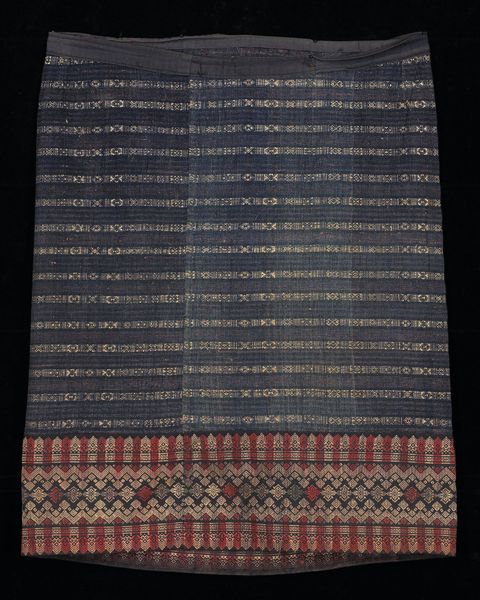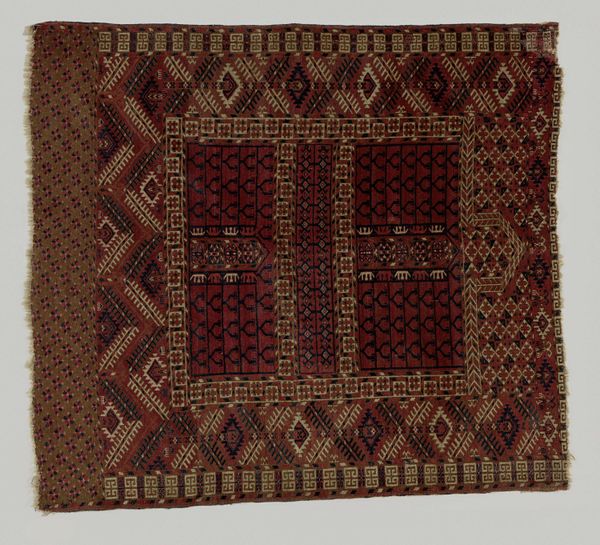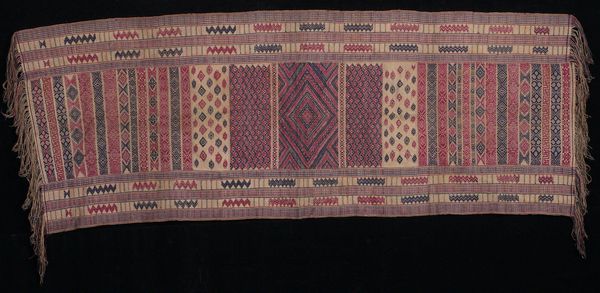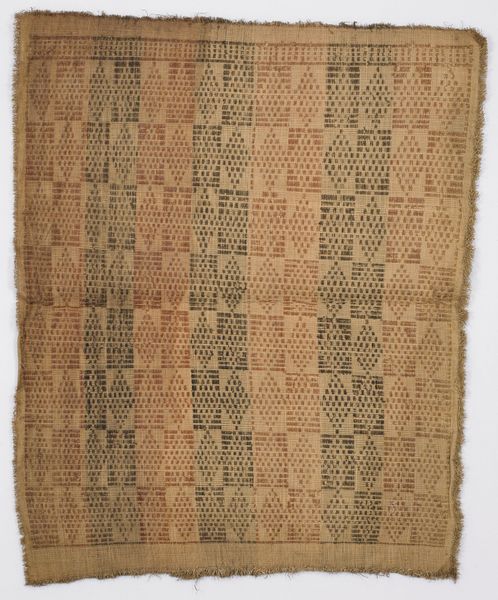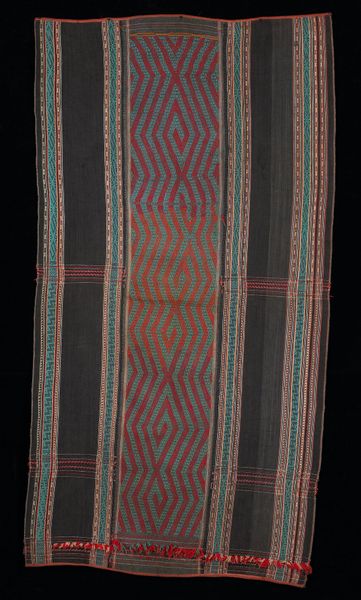
weaving, textile, cotton
#
pattern heavy
#
weaving
#
textile
#
geometric pattern
#
abstract pattern
#
organic pattern
#
geometric
#
repetition of pattern
#
regular pattern
#
pattern repetition
#
cotton
#
layered pattern
#
funky pattern
#
repetitive pattern
Dimensions: 40 x 32 1/8 in. (101.6 x 81.6 cm)
Copyright: Public Domain
Curator: Immediately, I notice the beautiful rhythmic patterns. This Sarong, from around the 20th century, employs such fascinating geometric designs in its woven cotton textile. Editor: It strikes me as more than just decorative, there's something incredibly intentional in its composition. What can you tell me about how an object like this connects with social practices and cultural history? Curator: Sarongs like these have served important functions throughout communities. The symbolism we often see woven within reflects belief systems or communicates identity and status within different cultures. Think about the motifs that you see being passed down through generations, anchoring individuals in time and kinship. Editor: Right, so beyond simply being aesthetically pleasing, the patterns, perhaps even the colors chosen for the weaving could speak volumes about ritualistic significance or public displays of affiliation. What can you say about how textiles themselves historically play a role as social objects? Curator: Textiles function as more than material items; they act as carriers of cultural memory. We see how they reinforce a collective past by weaving shared experiences, values, and narratives into them. In this particular Sarong, the visual repetitions suggest an interconnectedness, maybe implying continuous communal bonds and stories interwoven across lifetimes. Editor: It's amazing to imagine its possible roles in shaping gender norms and marking significant life transitions throughout these societies too, through ritualized presentation and symbolic colors, isn't it? And the creation of the sarong, using weaving techniques could itself reflect community roles with cultural traditions? Curator: Exactly. The making of a sarong would embody an important form of creative expression and perhaps become integral to identity building in certain areas, representing localized aesthetics and even community distinctiveness. It becomes both art and artifact. Editor: Understanding the Sarong through this cultural context really shifts my understanding; from simply observing geometric patterns I see intricate symbols revealing profound cultural depths. Curator: Yes! These visual codes become powerful carriers of cultural identity, history and psychological depth, adding more meaning. Editor: It definitely provokes fresh insights on textile creation within social narratives as part of cultural identity expression for me!
Comments
No comments
Be the first to comment and join the conversation on the ultimate creative platform.


